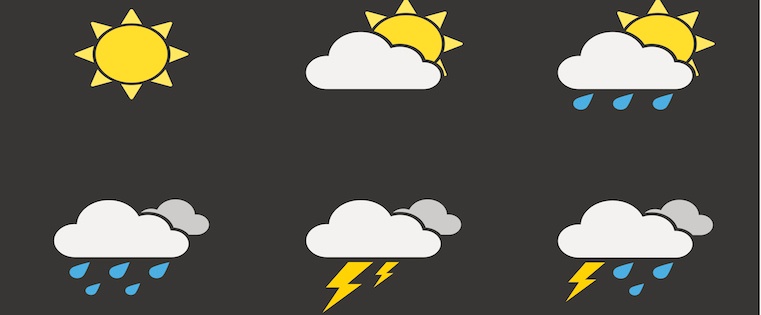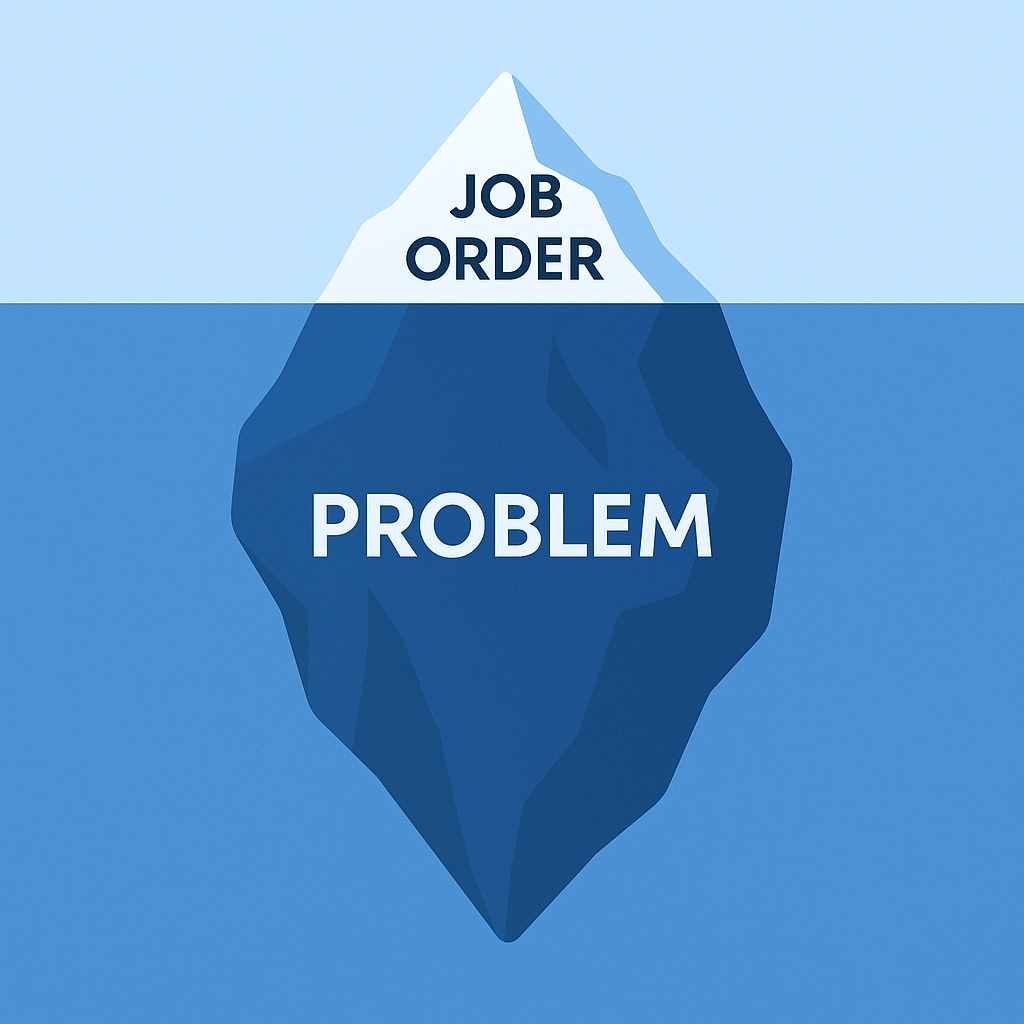Selling With Your Consultant
In my previous post, How to Prevent Unexpected Contract Terminations, I shared how systemizing consultant and client check-ins at key milestones...

Sales forecasting can play a major role in the growth and development of your staffing organization. According to research from the Aberdeen Group, companies with accurate sales forecasts are 10% more likely to grow their revenue year-over-year and 7.3% more likely to hit quota than those with poor, inaccurate sales forecasts.
revenue year-over-year and 7.3% more likely to hit quota than those with poor, inaccurate sales forecasts.
The challenge however is that many sales leaders struggle to produce a sales forecast that accurately reflects reality. In this blog post, the definitive guide to sales forecasting, I'm going to share with you what a sales forecast is, why sales forecasting is important and what some of the common factors are that can impact sales forecasting accuracy.
What is a Sales Forecast?
Your sales forecast predicts what a salesperson, sales team, sales region, department or company will sell weekly, monthly, quarterly, or annually. Sales managers develop a sales forecast with input from their sales reps to estimate the business volume they will close within a date range. Sales Directors use sales team forecasts to estimate and predict regional sales volume. The VP of Sales produces an organizational wide sales forecast off the Director and Manager's sales forecasts.
Why Sales Forecasting is Important
Forecasting sales revenue enables sales reps and sales managers to identify potential issues with their opportunities while there is still time to avoid or mitigate them. For example, if you notice your team is forecasting 20% below sales quota, you can figure out what's going on and course-correct before it is too late. Maybe market rates have drastically skyrocketed for candidates in which case they have a short shelf-life in with case you have little supply. Or, a competitor has dropped their pricing. Sales forecasting helps gives sellers and sales managers the insight to course-correct.
Sales forecasting also plays a significant role in management decision making including hiring, budgeting, and resource planning.
Suppose your sales forecast predicts a 45% increase above sales quota. To maintain growth and keep pace with demand, you would want to start recruiting for additional salespeople. If on the other hand your sales forecast was predicting a 25% drop it would be smart to hit the pause button on your hiring plans.
A sales forecast can be used to motivate a sales team. Suppose each week you track and update your quarterly sales forecast to see if your team is on track to hit sales quota. If your sales team is forecasting 20% ahead of quota you could implement a kicker to incentive your team to exceed the sales forecast. On the other hand, imagine you have a sales rep who is struggling or on a plan, you could create a daily sales forecast to make sure they're not falling behind.
Keep in mind that your sales forecast will never be 100% accurate. but that doesn't mean they're not valuable. Drastically inaccurate sales forecasts are problematic. But if you have a structured sales process your sales forecast should be relatively accurate and on point, which will help you plan for and drive growth.
What You Need to Produce a Sales Forecast
To produce an accurate sales forecast you will need the following ingredients:
Common Factors that Impact Sales Forecasting Accuracy
Internally Driven Factors
Hiring and Firing: Revenue will fluctuate based on salespeople coming to and leaving your company. Sales revenue growth can and will take a big hit if you don't have a candidate pipeline. On the other hand, if you hire a large group of sales reps in a single new hire class, your sales forecast should reflect that based on new hire ramp up time.
Changes in Compensation/Commission Structure: If you're going to change your sales compensation plan than you need to make sure you adjust your sales forecast.
Changes in Sales Territories: It takes time for reps to familiarize themselves with a new territory and build their sales pipeline, so expect sales win rates to take a short term dip before picking up again.
External Factors
Competitive Changes: What your competitors are selling and how they're selling it will impact your sales win rates. If a competitor slashes their prices, your reps may need to discount more aggressively or risk losing business. If a competitor has turnover on the other hand, you could see new opportunities.
Economic Conditions: When economic conditions are strong organizations are more likely to invest in their businesses. When economic conditions are weak, the sales cycle usually takes longer and there's a greater level of scrutiny for every purchase.
Industry Drivers/Changes: New laws, regulations and mandates can either help or hurt your business -- either by creating demand for service or making prospects reluctant to use your service. Make sure you account for this in your sales forecast.
Seasonality: Certain customers might be more likely to buy at certain times of the year. Be sure your sales forecast accounts for these customers.
The Most Common and Easiest Sales Forecasting Method for Staffing Companies
There are several different ways in which staffing firms can go about producing a sales forecast but I recommend you do it by opportunity or deal stage.
Sales Forecasting by Opportunity/Deal Stage
This is the most common sales forecasting method. This sales forecasting approach accounts for each deal in your sales pipeline and the stage (of the sales process) that each deal resides in. As a deal or opportunity advances further down the sales pipeline, the greater the likelihood is that the deal will close. For instance, you may decide that prospects who have scheduled the candidate phone screen are 30% likely to close while those customers who extend a verbal offer to hire the candidate are 80% likely.
Sales forecasts are typically produced for specific date ranges, most commonly monthly or quarterly. But this can very depending on the length of your sales cycle.
Once you've identified your sales forecasting reporting date range you simply multiply each deal's potential revenue (or gross profit) value by the probability to close. For example, if you have a deal in your sales pipeline worth $100,000 and it is 30% likely to close (the candidate completed the initial phone screen), your sales forecast for that deal would be $30,000.
After you've done this for each deal in your sales pipeline, add up the total to get your overall or cumulative sales forecast.
One drawback to this sales forecasting methodology is it doesn't account for the age of the opportunity or deal. For example, you could have two deals in your sales forecast, both 30% likely to close but one deal could be 2 days old and the other could be 60 days old. The problem is each deal is treated the same despite the fact that one deal is now 60 days old. For this reason, you have to trust that your salespeople regularly maintain and update their sales pipeline for validity.
Does your staffing firm produce a sales forecast? What sales forecasting methods are you using? What are you finding most challenging about producing an accurate sales forecast? Let's start a conversation in the comments section below.
If you want to improve sales performance, download the free eBook titled "The Definitive Guide to Building a Buyer Aligned Sales Process."

In my previous post, How to Prevent Unexpected Contract Terminations, I shared how systemizing consultant and client check-ins at key milestones...

About a year ago, I was serving as the fractional revenue leader, managing sales and recruiting for a client.

If you’ve worked in staffing long enough, you’ve been trained to chase job orders.